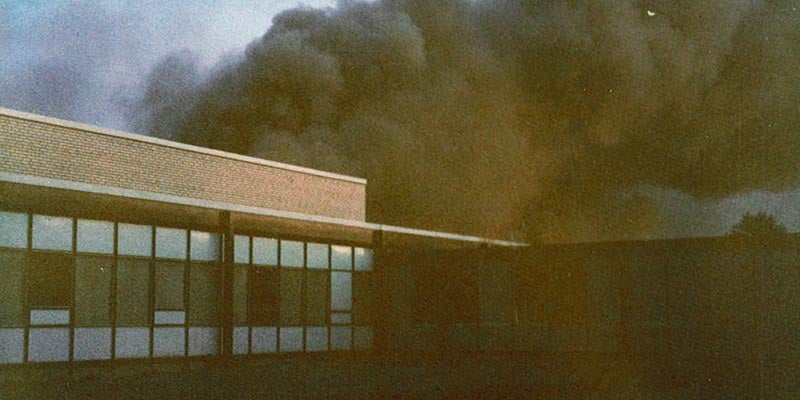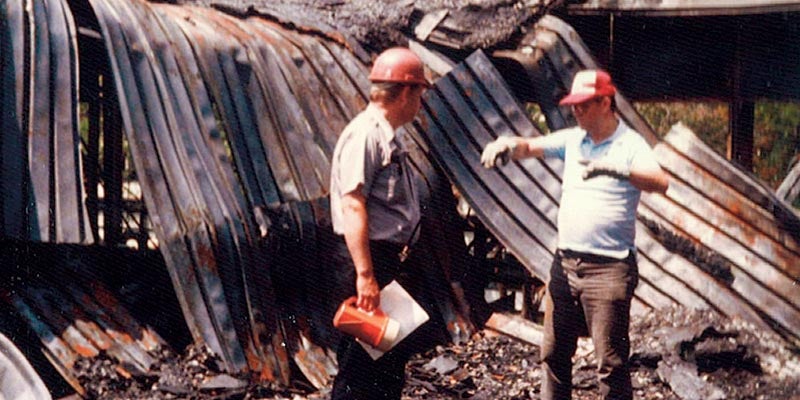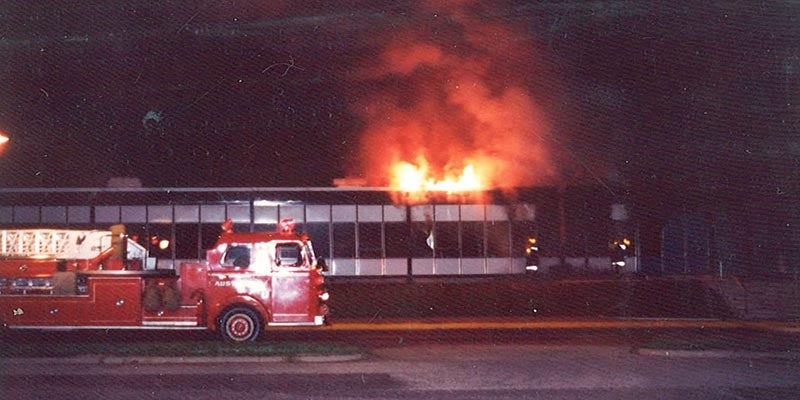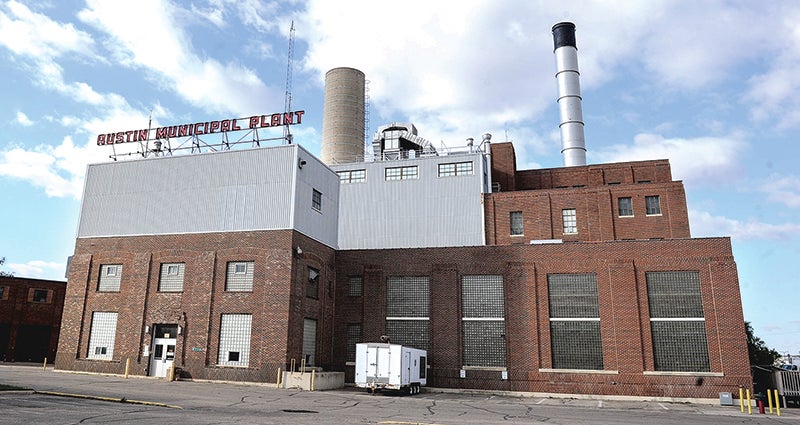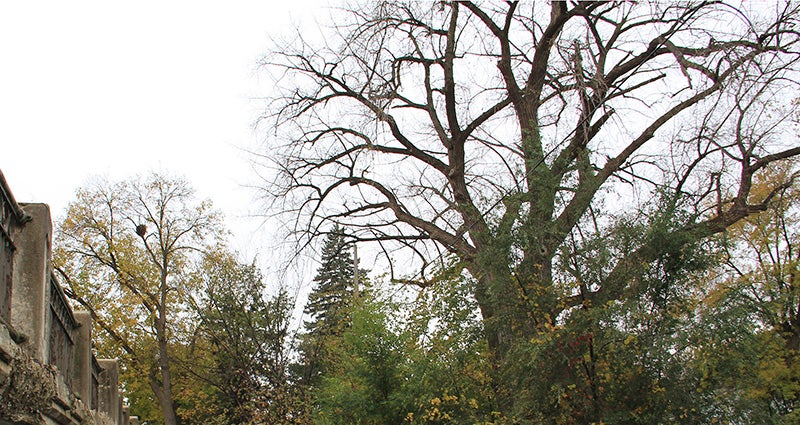July 3 marks 30th anniversary of Ellis fire
Published 5:45 am Sunday, July 3, 2016
After another week of work as principal of Ellis Middle School in the summer of 1986, Neil Hanson came home with thoughts of a weekend getaway with his family.
“I went home in the afternoon of July 2 with the idea of vacation and taking the kids away for the weekend,” he said.
His weekend, however, turned out to be the opposite of relaxing. At around 1 a.m. that night, he received a call from Brian Hecimovich.
“Mr. Hanson, there’s a fire at Ellis,” Hecimovich said, according to Hanson’s written log of the fire.
Thirty years have passed since former principal Hanson received that phone call and Ellis suffered the worst school fire in Minnesota history at that time.
At first, Hanson just assumed it was a couple of pranksters from summer school causing trouble.
“I didn’t think anything of it,” Hanson said.
After another alarming phone call, however, he decided to get in his car and check out the scene.
“When I got to Skinner’s Hill, you could see the fire,” Hanson said.
Upon arriving at the school, he was asked to open the front doors of the building; the doors were so hot that the key couldn’t turn the lock.
Media outlets from across the state jumped on the story and a couple brought helicopters that night.
“It was a big deal,” Hanson said.
Current Austin Public Schools board member Richard Lees was a teacher at Ellis at the time of the fire. While the news spread like wildfire through town, Lees didn’t hear about the incident until he was teaching kids during drivers training a day after.
“Two students asked me what I was going to do for a [class]room this fall, but I didn’t know what they were talking about,” Lees said. “I hadn’t realized it.”
Fifty-five instructional areas total were destroyed in the blaze, including 45 regular classrooms plus shop areas, the library, home economics rooms, offices and the cafeteria.
The only areas saved from the fire were the gymnasium, swimming pool and music area, although they did suffer some smoke damage.
In the end, the blaze caused an estimated $15 million in damage.
Lees recalled doing inventory of his classroom right before summer and thinking it wasn’t a useful way to spend his time. Little did he know he would lose personal belongings, along with his classroom materials.
Though officials never found an exact cause, it is believed that an auto-start printer was the source of the fire. Hanson suspects that something in the printer caused a spark with the toner.
With only two months to the first day of school, administration and the school board had to think fast to figure out how they were going to approach the loss of a building which housed about 820 students.
“We had to decide: Do we want to split students up or keep them all together?” Hanson said.
After several weeks of meetings and some disagreements, it was decided that grades sixth through eighth would all attend Austin High School. Some parents were concerned about the two age groups mixing at first, but Lees said the layout didn’t allow them much opportunity to mingle.
“There was no problem whatsoever with this mix of kids,” he said. “The older students stuck to themselves.”
The basement area of the school was transformed and the swimming pool was filled in to build more classrooms. Businesses also donated used furniture and supplies to the school.
“We were there for three years,” Hanson said. “We made it work.”
The classrooms were not ideal for Lee’s science classes, but he still believed administration handled the situation well.
“We had to do a lot of scrambling, but the administration did a good job with finding housing for us,” he said.
In the meantime, construction started on the new middle school building in 1987 and was completed in 1989. The original building had to be completely torn down due to asbestos and reconstructed using money from the insurance settlement. Hanson described the new facility as a “pretty basic building.”
“We wanted a Cadillac, but we had the money for a Chevy,” he joked.
Thirty years have passed since July 3 and night when Ellis went up in flames, but Hanson still remembers the alarming late night phone call and the two months spent scrambling to start the school year.
“No class tells you what to do if your school starts on fire,” Hanson said. “We just used common sense. It wasn’t the greatest of memories, but we got through it.”
An excerpt from Neil Hanson’s notes, dated July 3, 1986:
1:05 a.m.
– Call from Brian Hecimovich – ìMr. Hanson, thereís a fire at Ellis!î
– Few minutes later, Donna Maas called. ìFire is bad.
1:15 a.m.
– Enroute to Ellis, saw smoke from Skinner Hill – knew it was bad.
– Upon arrival – I was asked to open front doors – doors were so hot, key wouldn’t turn lock.
2 a.m.
– Called Mr. Bannina (didn’t know if Dr. Young was in town) and Bob Ackland.
4:30 a.m.
– Came home – still in disbelief – Mary didn’t believe me.
7:45 a.m.
– Returned to Ellis
– Dan Conradt (KAUS Radio) interviewed me. (Later I learned it was used on Minnesota News Network)
9 a.m.
– Channel 5 (Minneapolis), Channel 4 (Minneapolis), and Channel 9 (Mpls.) interviewed me re: my thoughts. Channel 3 (Mason City) participated also.
10 a.m.
– Administrative meeting to begin plans. Dr. Young suggested short-term and long-term. Board of Education met at 4 p.m.
– They were given an update on activities. Security was hired to watch building and Wagner Construction put up fencing.
– Earlier, Jim Hellerud, State Fire Marshall, asked me many questions.
– WCCO Radio called during the day and Rochester Post Bulletin asked for interview.
5:30 p.m.
– Arrive home – David and Elaine came to spend July 4th weekend.
– Calls from: Dorthy Berg (Brooklyn Center), John and Gail Jubala (Duluth), George Winter (Bemidji)
(As I tried to unwind during the evening, I recalled the calls our district had received as early as 10 a.m. – calls from architects, appraisers, restoration companies, etc.)


